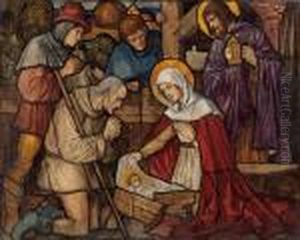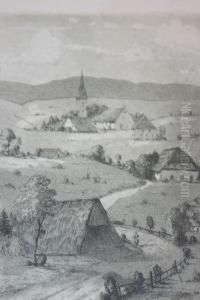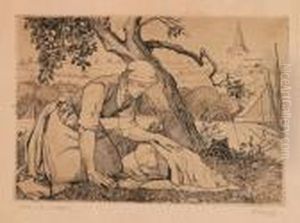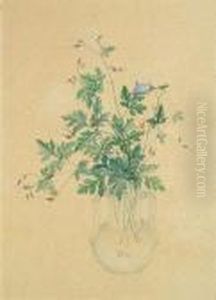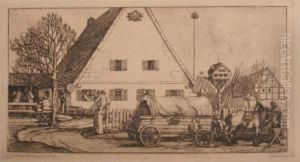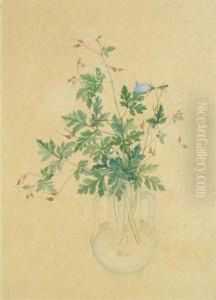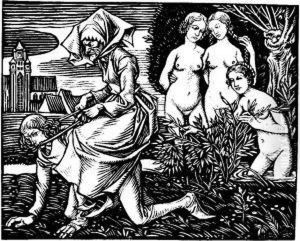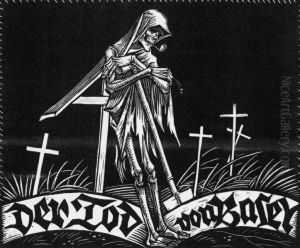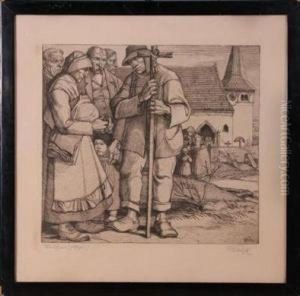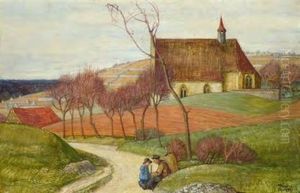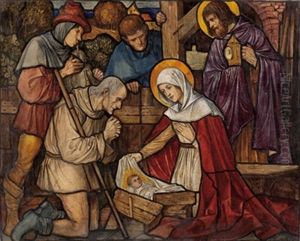Rudolf Schiestl Paintings
Rudolf Schiestl was an Austrian artist known for his painting, graphic work, and book illustrations, born on April 21, 1878, in Vienna, Austria. He was part of the early 20th-century art scene in Vienna, which was a vibrant center for art and culture, particularly during the period of Art Nouveau and the Secession movement.
Schiestl's education in the arts began at the School of Applied Arts in Vienna, where he studied under notable artists such as Franz von Stuck and Christian Griepenkerl. His style was deeply influenced by the artistic currents of the time, especially by the Art Nouveau movement's emphasis on organic lines and decorative elements. Schiestl's work was marked by a strong sense of design and often featured themes from mythology, literature, and history.
He gained recognition for his illustrations in books and magazines, which showcased his skill in both drawing and printmaking. Schiestl was particularly admired for his woodcuts and etchings, through which he achieved rich textures and intricate details. His illustrations often accompanied texts by classic authors and were characterized by a harmonious interplay between image and text, capturing the essence of the stories with visual eloquence.
Throughout his career, Schiestl also worked on larger-scale projects, such as designing stained glass windows and frescoes for churches and public buildings. This aspect of his work reflected the multifaceted approach to art that was typical of many artists of his time, who were not confined to a single medium or style.
Rudolf Schiestl's artistic contributions were part of the broader Secessionist movement in Vienna, which sought to break away from traditional academic conventions and promote a more modern, progressive approach to art. While not as widely known as some of his contemporaries, such as Gustav Klimt or Egon Schiele, Schiestl was a respected member of the artistic community and his work remains a testament to the rich cultural milieu of early 20th-century Vienna.
Schiestl passed away on June 2, 1931, in Vienna, leaving behind a body of work that, although not as celebrated as that of some of his peers, provides valuable insight into the artistic explorations and expressions of his time.
